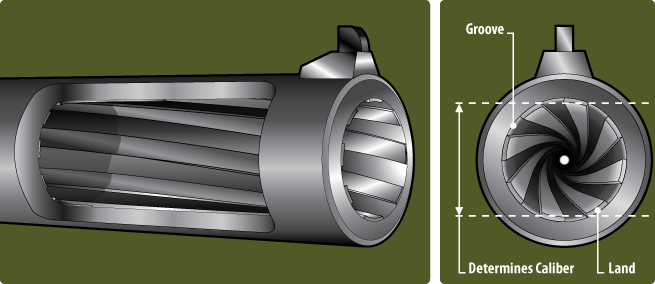 |
| How It All Started.... |
Some rifle shooters may not even realize that the barrel on their rifle has grooves or "rifling" inside it. In fact, rifling is necessary to give the projectile the proper spin when leaving the muzzle. Bullet spin gives it stability in flight, and the more stable a bullet, the more accurate it will be over distance. Naturally, the quest for the most desirable twist rate in the AR-15 rifle is still unsettled.
 |
| Example of barrel grooves |
 |
| Pick your poison.... |
So what does this all mean for you and I? Well, not all of you are going to need to stabilize tracer rounds out to 900 yards (I know I never will). And I don't really plan on shooting anything lighter than M193 55grain ball ammo either. But on occasion I like to shoot 77 grain SMK out at distance with my AR, and for me the 1:7 fits all of the above. Not to mention, it conforms to the TDP and most reputable manufacturers provide barrels in 1:7.
A lot of commercial manufacturers of AR-15's provide 1:9 twist barrels on their rifles, which will stabilize bullets of less than 50 grains, but anything over 70 grains is hit or miss at best. The majority of AR shooters probably won't ever shoot anything that heavy unless they are loading up for some long range work. This is a serviceable twist rate for everyday plinking and paper punching.
A new sort of "middle-ground" is the 1:8, which is gaining popularity as it allows shooters to shoot lighter varmint loads less than 50 grains, but also some of the long distance loads up to 80 grains or so. It's still a custom order or non-standard twist from a lot of companies, but is a very reasonable option if you can find it.
Hopefully you understand a little more about AR15 barrel twist rates now and can make a more informed decision when you purchase a rifle. The 1:7, 1:8, and 1:9 twist rates are all very serviceable for 99% of AR15 enthusiasts, but may offer different benefits depending on your mode of operation. Remember the importance of accuracy; matching your twist rate to your ammunition is a critical step in maintaining the highest level of accuracy for yourself.
"Speed is fine; accuracy is final."- LAV

No comments:
Post a Comment